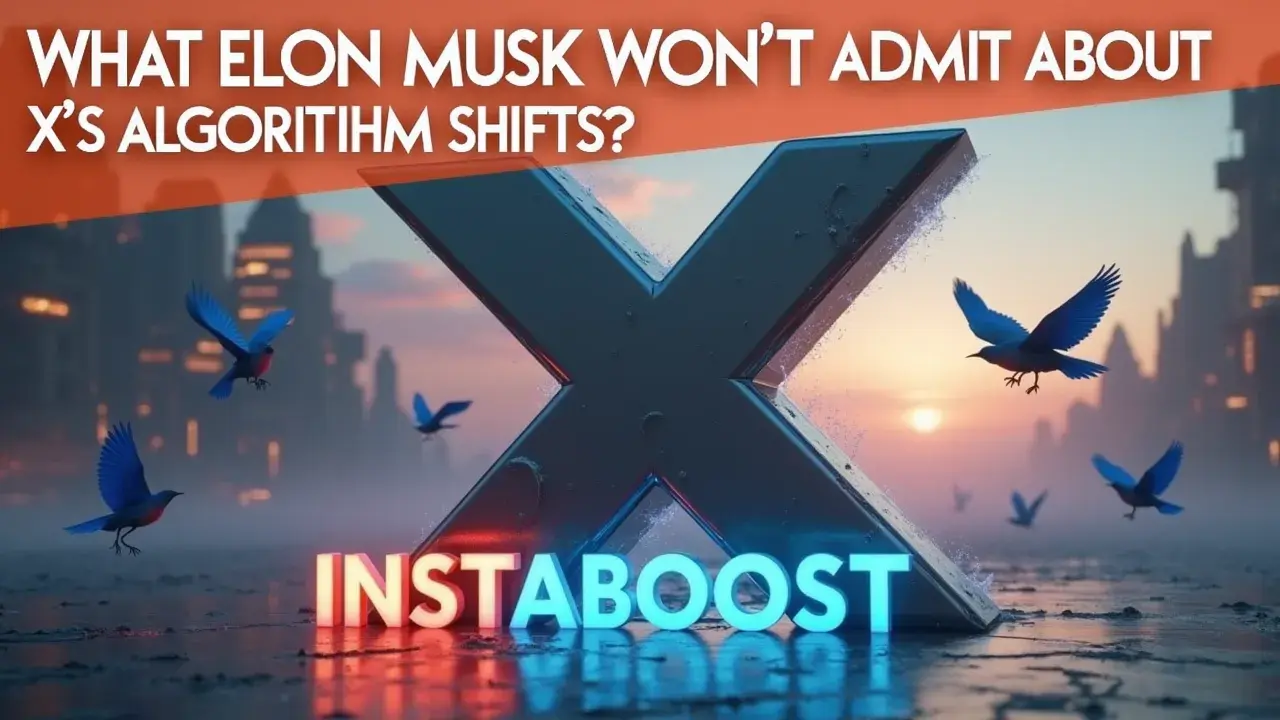What Elon Musk Won’t Admit About X (Twitter)’s Algorithm Shifts?
Algorithm adjustments on X (Twitter) likely prioritize certain content types and behaviors, reshaping what appears in social feeds. The silence suggests underlying tweaks to ranking signals and engagement weighting that change reach and visibility. For users, this means different post formats or interaction patterns can surface more consistently while others recede. Aligning content with these evolving signals helps maintain relevance and improves the odds of steady distribution.
What’s Really Driving X’s Algorithm Updates?
When Elon Musk talks about adjusting X’s algorithm, he usually says it’s about making things clearer for people or improving how the site feels to use, maybe even supporting free speech. But looking at how these changes actually play out, they’re not just simple improvements. They really decide what shows up in people’s feeds and what fades away, which shapes the conversations that most people end up having. Officially, it’s always about engagement or cutting down on spam, but those explanations leave out how each tweak can quietly shift whose voices get through and whose don’t.
If you’re scrolling for news, trying to get your posts seen as a creator, or running something like INSTABOOST and relying on steady visibility, these algorithm updates can affect you in ways that aren’t always clear at first. It’s easy to lose track of how closely things like X exposure support tie into the shifting nature of visibility on the platform. Things like changing how long-form posts are ranked or how “relevance” is defined might seem technical, but they have real consequences – some people and views get boosted, others drop off.
Even though some parts of X’s code are now public, the reasoning behind these choices isn’t really obvious. There’s a lot that never gets spelled out – like how certain updates might help direct the kinds of topics people focus on, or what gets pushed aside.
For anyone hoping to stay visible or build an audience on X, it feels like you have to pay attention to more than surface-level tips. The patterns behind these updates matter too, even if they’re hard to pin down.
For anyone hoping to stay visible or build an audience on X, it feels like you have to pay attention to more than surface-level tips. The patterns behind these updates matter too, even if they’re hard to pin down.

How Algorithm Changes Quietly Redefine What Thrives on X
I keep seeing the same thing happen with every big campaign when X updates its algorithm. It’s not usually about what suddenly gets promoted at the top – it’s about what quietly drops out of view. Certain voices, certain topics, or even just the types of posts people used to rely on, they stop showing up because they don’t match the new way things work. Musk is always talking about better transparency or improving how people use the platform, but honestly, those announcements don’t really get at what’s actually changing underneath.
Each tweak to the algorithm is more like someone adjusting which stories, perspectives, or even communities get a chance to be seen. If you’ve ever watched the reach numbers on a campaign before and after one of these updates, you know how fast things can shift. Strategies that worked last month might suddenly stop making a dent, and months of work building an audience can unravel almost overnight. This isn’t random.
Deciding what shows up in the feed – whether it’s a new meme, a political thread, or a story breaking in real time – definitely shapes what’s possible to talk about online. In a sense, every update to how things are ranked is a quiet filter, changing who gets noticed and who doesn’t.
Deciding what shows up in the feed – whether it’s a new meme, a political thread, or a story breaking in real time – definitely shapes what’s possible to talk about online. In a sense, every update to how things are ranked is a quiet filter, changing who gets noticed and who doesn’t.
That’s why companies like INSTABOOST, and people who manage social campaigns, spend so much energy tracking every little change. Even the simple question of how to get more followers on X becomes more complicated when the ground keeps shifting. So when Musk frames these changes as routine fixes, or claims they’re not about anything bigger, I think it’s worth digging into what’s really happening behind the curtain, even if it’s not obvious at first glance.
Why Strategy Shapes What Thrives on X
Changing things without a plan can feel pretty aimless. When X rolls out another algorithm update, it’s easy to assume it’s some technical tweak or a fix for glitches, but I think it’s worth pausing to ask who actually gets an advantage from these changes. If you’re not clear on what you’re aiming for, these updates start to shape what people see and who gets noticed – almost like filters you can’t see. It isn’t always about making the feed better for everyone; a lot of the time, it’s about setting the tone for which topics or voices come forward and which ones get lost.
So if you’re hoping to get your ideas out there or build a following, it isn’t enough to jump at every new update. I’ve found it’s more useful to try to understand what’s behind these adjustments and then think about how you share and interact. Are you posting in a way that fits how the algorithm works right now? Are you having real conversations or joining groups where what you say can actually spread before things get buried?
Even things like a likes bundle for Twitter can play into how visible your content becomes, depending on the mood of the current system. People who do well on X, whether they’re running a brand like INSTABOOST or handling an independent account, seem to be the ones who pay attention to these shifts and adapt to them. They’re not making the biggest fuss; they’re just steady about noticing what matters to the platform at any given time, and responding to that, even if it means changing how they work from week to week.
Even things like a likes bundle for Twitter can play into how visible your content becomes, depending on the mood of the current system. People who do well on X, whether they’re running a brand like INSTABOOST or handling an independent account, seem to be the ones who pay attention to these shifts and adapt to them. They’re not making the biggest fuss; they’re just steady about noticing what matters to the platform at any given time, and responding to that, even if it means changing how they work from week to week.















